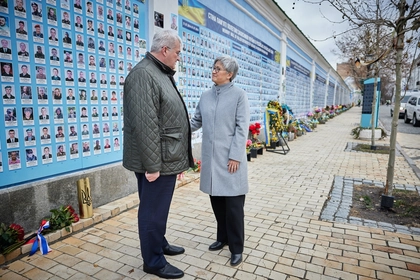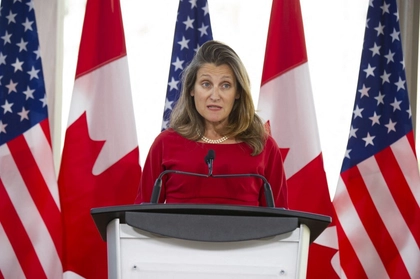Russia’s central bank has published monetary policy guidelines for 2025-2025 setting out four scenarios for the country in the coming years:
• Baseline scenario – no new shocks
JOIN US ON TELEGRAM
Follow our coverage of the war on the @Kyivpost_official.
• Disinflationary scenario – a positive scenario where investments and productivity increase
• Pro inflationary scenario – increased pressure on inflation due to high domestic demand and growth in business labor costs
• Risk scenario – akin to a global crisis comparable with 2008

The baseline scenario means the Russian economy will face no new shocks. Inflation will slow down from a projected 6.5to 7 percent in 2024, to 4 to 4.5 percent in 2025.
Money will still be expensive in Russia under this scenario: the key interest rate will sit somewhere between 16.9 to 17.4 percent in 2024, 14-16 percent in 2025, and then decrease to10 to 11 percent in 2026, and 7.5 to 8.5 percent by 2027.
Russia’s GDP will still grow by 3.5 to 4 percent by the end of 2024 but then slow down during 2025-2026. GDP is estimated to sit at 0.5 to 1.5 percent in 2025, 1 to 2 percent in 2026, only to increase up to 1.5 to 2.5 in 2027.

Australian Foreign Minister Visits Kyiv, Confirms Reopening of Embassy
This means that the baseline scenario points to Russia’s economy waning, but not to an extent that will cause its economy to flounder completely.
The more positive disinflationary scenario predicts a higher level of investment and a quicker rise in total factor productivity. Under this scenario, GDP will rise faster due to increases in consumption, with inflation lowering due to growth in labor productivity.
GDP dynamics are more positive compared to the baseline scenario owing to an anticipated faster increase in final consumption and gross capital formation. In addition, growing labor productivity dampens the pro-inflationary effect of rapidly rising real wages. The key rate will then be lower: 12to 14 percent for 2025, 9-to10 percent in 2026, and 7.5 to 8.5 percent in 2027.
The more negative pro-inflationary scenario means rising business costs and higher inflation due to higher wages and atight labor market. The government will also spend more on preferential loan programs, and tariffs on imports will be introduced to stimulate avoiding of imports in Russia (“import substitution”).
The key rate will be higher: 16 to 18 percent in 2025, 11.5 to 12.5 percent in 2026, and 8.5 to 9.5 percent in 2027. However, even with such strict monetary conditions, inflation will only slow to 4 to 4.5 percent by 2026, and it will stabilize at the 4 percent target by 2027.
The riskiest scenario, whereby the global economy is facing an imminent crisis similar to 2008, means Russia will face more sanctions, demand in major economies might fall, and oil prices could significantly drop to $55 per barrel compared to $80 in the baseline scenario.
Under this scenario, Russia’s central bank will raise the key rate to 20 to 22 percent in 2025, while inflation may speed up to 13 to 15 percent in 2025.
You can also highlight the text and press Ctrl + Enter






